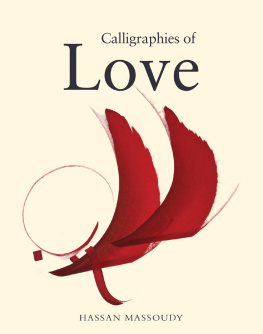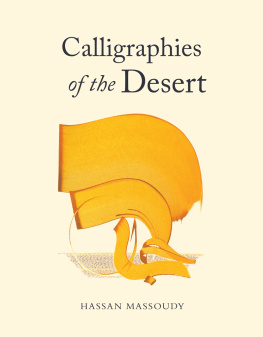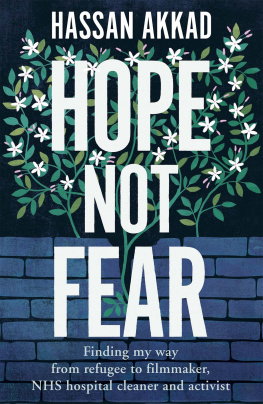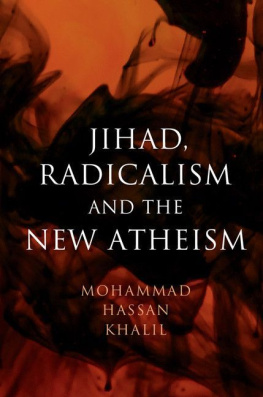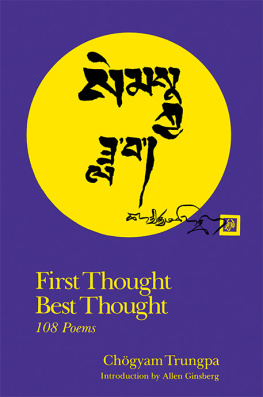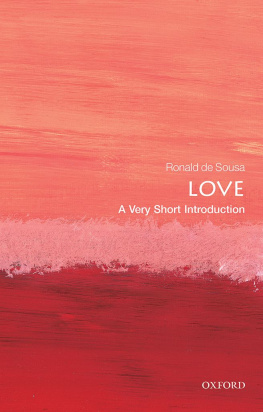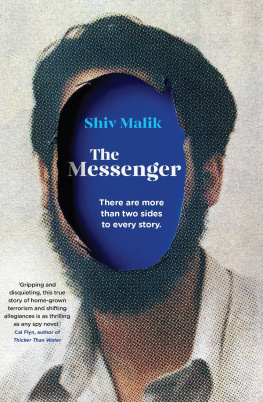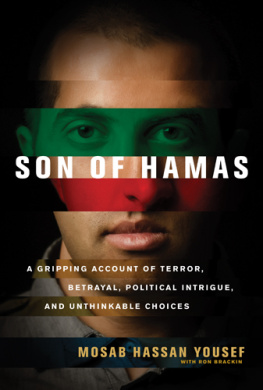Hassan Massoudy - Calligraphies of Love
Here you can read online Hassan Massoudy - Calligraphies of Love full text of the book (entire story) in english for free. Download pdf and epub, get meaning, cover and reviews about this ebook. year: 2017;2016, publisher: Saqi, genre: Non-fiction. Description of the work, (preface) as well as reviews are available. Best literature library LitArk.com created for fans of good reading and offers a wide selection of genres:
Romance novel
Science fiction
Adventure
Detective
Science
History
Home and family
Prose
Art
Politics
Computer
Non-fiction
Religion
Business
Children
Humor
Choose a favorite category and find really read worthwhile books. Enjoy immersion in the world of imagination, feel the emotions of the characters or learn something new for yourself, make an fascinating discovery.
- Book:Calligraphies of Love
- Author:
- Publisher:Saqi
- Genre:
- Year:2017;2016
- Rating:4 / 5
- Favourites:Add to favourites
- Your mark:
- 80
- 1
- 2
- 3
- 4
- 5
Calligraphies of Love: summary, description and annotation
We offer to read an annotation, description, summary or preface (depends on what the author of the book "Calligraphies of Love" wrote himself). If you haven't found the necessary information about the book — write in the comments, we will try to find it.
Calligraphies of Love — read online for free the complete book (whole text) full work
Below is the text of the book, divided by pages. System saving the place of the last page read, allows you to conveniently read the book "Calligraphies of Love" online for free, without having to search again every time where you left off. Put a bookmark, and you can go to the page where you finished reading at any time.
Font size:
Interval:
Bookmark:


From his childhood in Najaf, Hassan also recalls his visits to the textile souk; its many colours in sheer contrast to the ochre tone of his desert city. He would walk there with his mother whom, he recollects, often spoke to him using proverbs and short literary quotes. Anyone that has visited Hassans studio, along Paris river Seine on the Quai de la Marne, cannot but sense the influence those early years have had on him. The walls of his atelier are adorned with beautiful calligraphic compositions, in colour and in black and white, based on short phrases that he has collected from around the world. The words are in Arabic and often translated into French, and include poetry, quotes by celebrated literary figures as well as proverbs and words of popular wisdom as his mother might have used. One word is picked out and sits at the centre of each composition, while the phrase in its entirety is beautifully written below, mainly in a script reminiscent of traditional Kufic.
The studio is clean and orderly, and the overall atmosphere is one of serenity, installing a sense of calm in all those who visit. For an art trove it is surprisingly welcoming one could just imagine being greeted by the line Enter in peace and without fear as was written in Thuluth script above the door of his Uncle Alis room. During his early years in Najaf, it was a school teacher, and later Hassans father, who recognised his beautiful handwriting, giving him the confidence and opportunity to develop his skill. His father would often ask Hassan to write the labels on goods destined to be exported, which he did with great enthusiasm. When he ran out of ink Hassan would hurry himself to the pigment shop which was filled with jars of natural pigments, each displaying beautiful handwritten labels giving its name and use. He recalls how these rows of colourful jars would plunge him into long reveries.
A similar scene has been recreated in his Parisian atelier, where behind his desk a wall is dedicated to shelves of natural pigments. As Hassan grew older, he was fortunate enough to meet a number of professional calligraphers and, in 1961, he moved to Baghdad to start work as an apprentice calligrapher. He would go on to set up his own studio while studying graphic design and fine arts. However, in 1969, in the midst of his countrys political unrest, Hassan moved to Paris and joined the Ecole Nationale Suprieure des Beaux Arts. It was here that he developed his interest in Western art history and practices, and explored new techniques and media, mainly oil and acrylic on canvas. These forays into Western practices failed to satisfy Hassan: he was still drawn to his own heritage as well as the calligraphic practice.
He knew traditional calligraphy alone would not allow the expression he so longed for thus started mixing figuration and script on canvases, aiming to combine his interest in Western art with his calligraphers background. He was struggling to find his way when he came across Japanese calligraphers working with large brushes. He noted: The freedom of movement and, very importantly, the ability to give expression to the calligraphers emotions became key to Hassans work, allowing him to develop the distinctive Massoudy style as we know it today. Whether considering calligraphy or art, one aspect that appears to have always preoccupied Hassan is his desire to reach out to people. In the 1960s in Baghdad he had been struck by Iraqi artist Jawad Salims monument Nasb Al Hurriya (The Monument for Freedom) commissioned in 1958 to mark the end of the countrys monarchy and to celebrate the unity of its people. He found the monument very powerful and said, When I saw the power to persuade of his Monument, I knew I wanted to become an artist and study in Paris, like Jawad Salim.
In his biography, he also recalls that later, when at the Beaux Arts, he and his fellow students were keen to reintroduce art into the city away from commercial considerations. We sought art which would touch the hearts of the spectators. Hence we come to the subject of this collection, love. In both life and art, Hassan is a generous person whose main concern has always been to give and share with others. At the Beaux Arts his actor and director friend Guy Jacquet, fond of the Arabic language and poetry, suggested they work together on a performance. They produced the show Arabesque, which combined music and poetry with calligraphies written live and projected onto a large screen.
The show was a huge success and was performed across France and Europe over a period of thirteen years. This was a wonderful opportunity for Hassan, enabling him to combine his love of calligraphy and expression, while also engaging with a public. He said: The works presented in the following pages include many different proverbs and poems about love. They range from Roman poets Virgil (70 bc19 bc) and Martial (circa 38/41 ad102/104 ad) to modern and contemporary literary figures such as Iraqi Badr Shakir Al Sayyab (19261964), surrealist poet Paul Eluard (18951952) and French Ren Char (19071988). There are words of wisdom from celebrated Arab and Iranian authors dating from the eighth to the thirteenth centuries, a period often referred to as the Golden Age of the Islamic world, as well as many other poems from countries and continents spanning India, America, Europe and Africa. Like many today, Hassan is deeply moved when hearing news of his homeland he struggles to make sense of the ongoing troubles in Iraq and the wider region.
When asked about his choice of subject for this book, he said that he enjoys working with quotes on love from all corners of the globe, mainly to go against all ideas of intolerance and violence widespread in the world today. Today more than ever, we need Hassans work for it shows us the beauty of tolerance written by the hand of this master artist calligrapher of the world. Saeb Eigner
London, 2017
Hassan Massoudy, Si Loin de lEuphrate, 2004, Editions Albin Michel, p. 159. The Abu Dhabi Festival, ADMAF, 2012, Interview with Gerard Houghton, p. 20. I saw that the eye was a window to the heart. 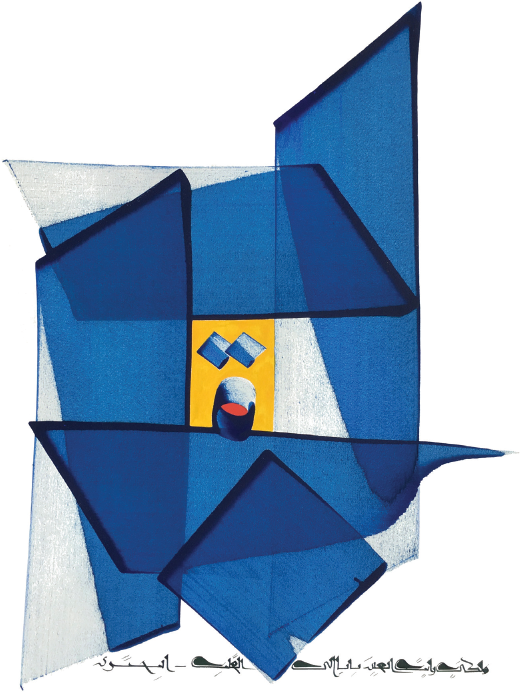
Font size:
Interval:
Bookmark:
Similar books «Calligraphies of Love»
Look at similar books to Calligraphies of Love. We have selected literature similar in name and meaning in the hope of providing readers with more options to find new, interesting, not yet read works.
Discussion, reviews of the book Calligraphies of Love and just readers' own opinions. Leave your comments, write what you think about the work, its meaning or the main characters. Specify what exactly you liked and what you didn't like, and why you think so.

